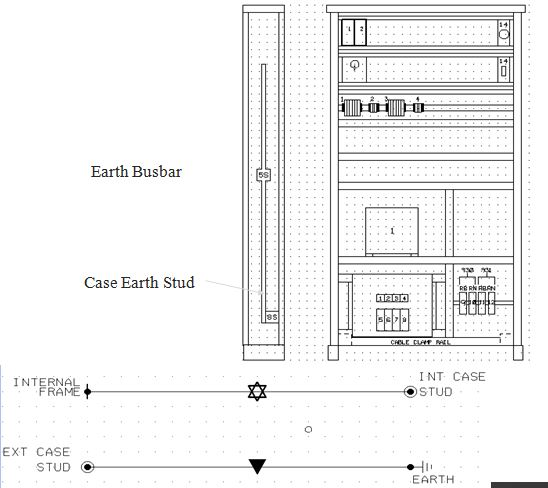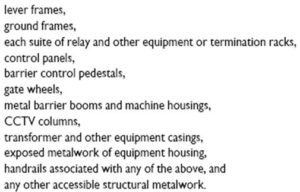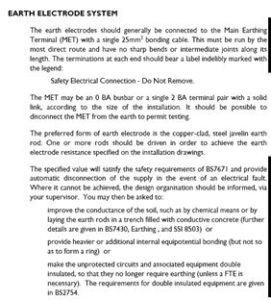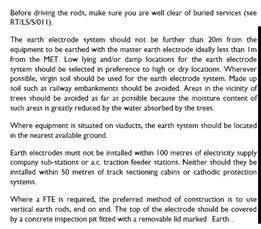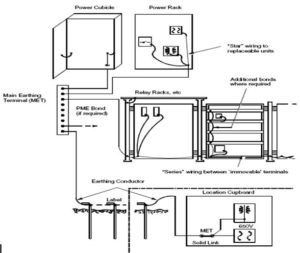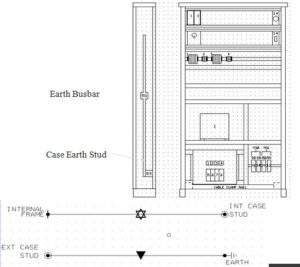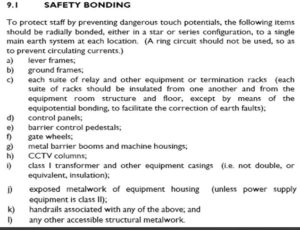RAILWAY EARTHING EQUIPOTENTIAL BONDING & LIGHTENING PROTECTION
Earthing
RT/E/C/11210 App 2J10 says that all metal work in a relay room must be earthed unless it is double insulated. Other metal works also need to be earthed if under fault conditions they come in contact with high voltages. Equipment required to be earthed are:
In addition to this all electronic equipment needs to be earthed to protect against interference. This earth is known as a fast transient earth (FTE). There has to be only one earth at any given location so all such earth points have to be bonded together.
If any earthed signaling equipment , loc box , or other equipment is present within touching distance of other metal works then it may be required to be bonded together to avoid the possibility of a potential difference between the items.
EARTH ELECTRODES
Requirements
Typical Bonding Arrangements
Typical earth arrangement in a loc
Equipotentail Bonding
Purpose is to protect against indirect contact with exposed conductive parts and extraneous conductive parts made live by an electric fault.
Earthed equipotential bonding within apparatus housings is associated with signalling power supply system.
Equipotentail bonding of extraneous conductive parts that are not within apparatus housings is associated with external electrical systems such as traction supply.
As a direct requirement all location cases within 2.0m of each other, one of which is earthed, are required to be bonded together to avoid the possibility of a potential difference between 2 metal works causing a flow of current when any person accidentally comes into contact with both cases simultaneously.
RT/E/C/11600 Part J
Equipotential Bonding
Where earthing systems are provided, a single main earth terminal or a busbar should be provided at each location to which the equipotential bonding should be connected.
Earthing and equipotential bonding conductors should be shown on the circuit diagrams and should be so designed that they can be tested for effectiveness (like by provision of disconnection links).
In AC electrified areas equipotential bonding to the traction return system should be used to protect against traction faults. All line side metal works should therefore be bonded to the traction return system instead of the true earth.
In DC electrified areas , metal works should not be bonded to the traction return system nor should the traction return be bonded to any earth system as it may provide a alternate return path. Damage to structures may also occur due to these stray currents.
Lightning Protection
What is a lightning strike? – A stroke of a lightning flash attaching to equipment.
Lightning protection system – Whole system of conductors used to protect an equipment from the effects of lightning.
What to do for protection ? – Provide a direct and low resistance path to the earth for the lightning currents. Concept of FTE with R=10 ohms or less.
Surge arrestors – discharges the surge voltages due to lightning strike. Should not be connected to earth unless the equipment has been specifically designed to resist multiple earth faults.
